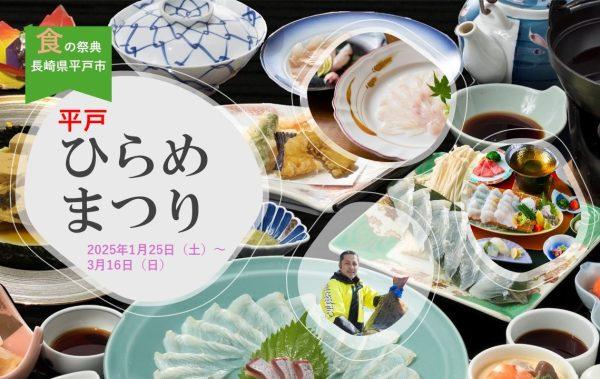Tenryo Hita Ohina Festival
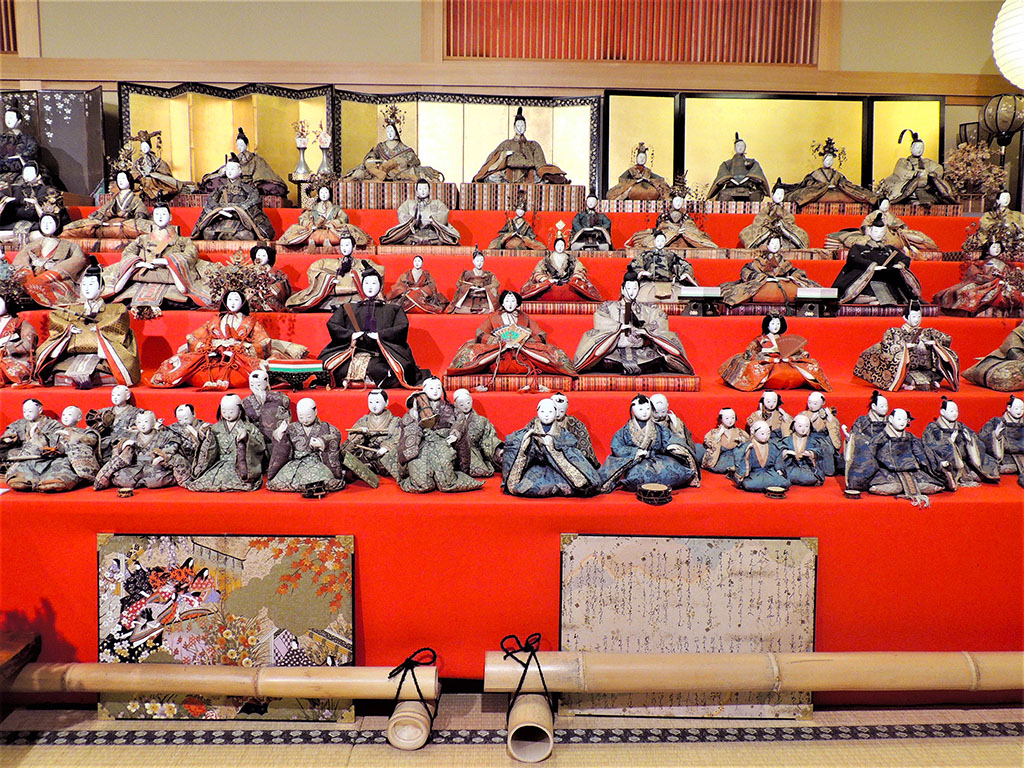
Beautiful faces of dolls changed over time
The Simple Warmth of Okiage Hina in the Chikugo River Basin
It has been a long time since we have seen hina dolls on a doll stand in ordinary homes. The three courtesans and five musicians have disappeared, and it is not unusual to see a pair of uchiuri-hina dolls in a small showcase. For wealthier families, they are displayed in five-tiered or seven-tiered arrangements. The Hina Festival was celebrated with glittering Hina dolls. In search of the splendor of the Hina Matsuri of the past, I went to Hita City in Oita Prefecture.
In the Mameda district, lined with old merchant houses
Buri Buri Hina Doll Tour
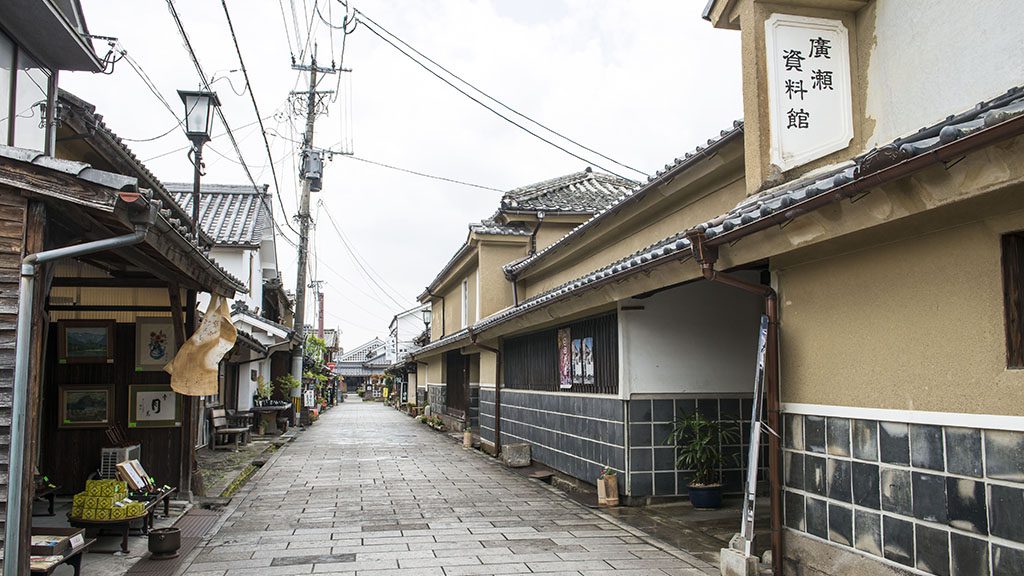
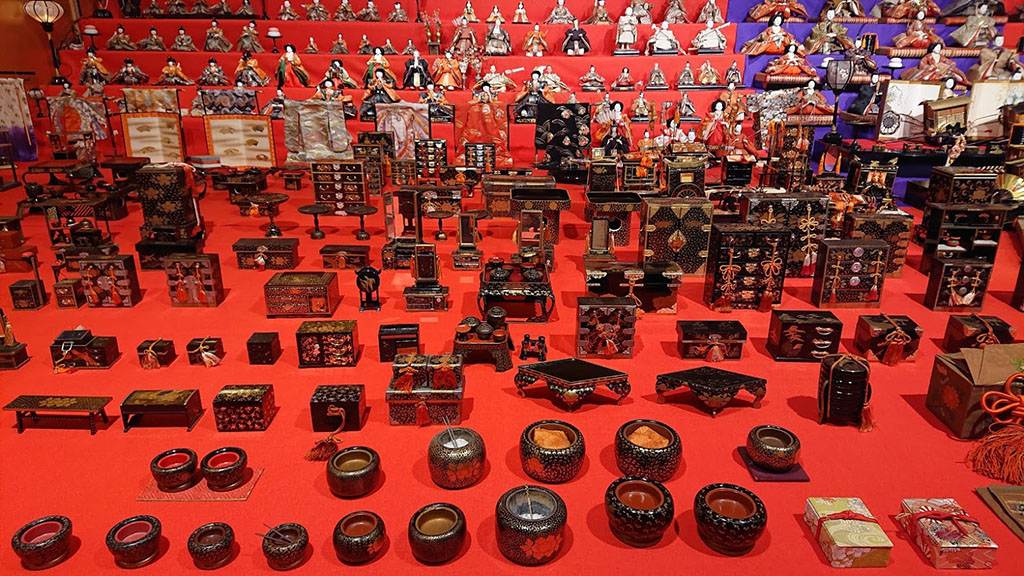
During the Edo period (1603-1867), Hita City in Oita Prefecture prospered as a castle town under the direct control of the shogunate, and was said to be the most prosperous in Kyushu. The town of Mameda, the center of the city, was lined with wealthy merchants and boasted an affluent lifestyle. The town was the center of the city and boasted a prosperous lifestyle, and traces of this lifestyle can still be seen today. There are many old merchant houses with white walls and storehouses built from the end of the Edo period to the Meiji and Taisho periods, and walking through the old streets is like stepping back in time. The area has been designated as an important traditional building preservation district.
The Tenryo Hita Ohina Festival is the town's major early spring event. The festival is held from mid-February to the end of March every year. During the festival, dolls from the past and present are displayed at 13 locations, including the Tenryo Hita Museum and the Kuma district in the Ryokan town. The number of dolls on display is too large even for the tourist association to keep track of. Among them, the Hina Goten, located in the corner of Hita Soy Sauce, a miso and soy sauce store, has about 3,800 hina dolls lined up in a row. It is truly a breathtaking display of hina decorations! The dolls are from different periods of time, and it is fun to see the faces of beautiful women that have changed over time.
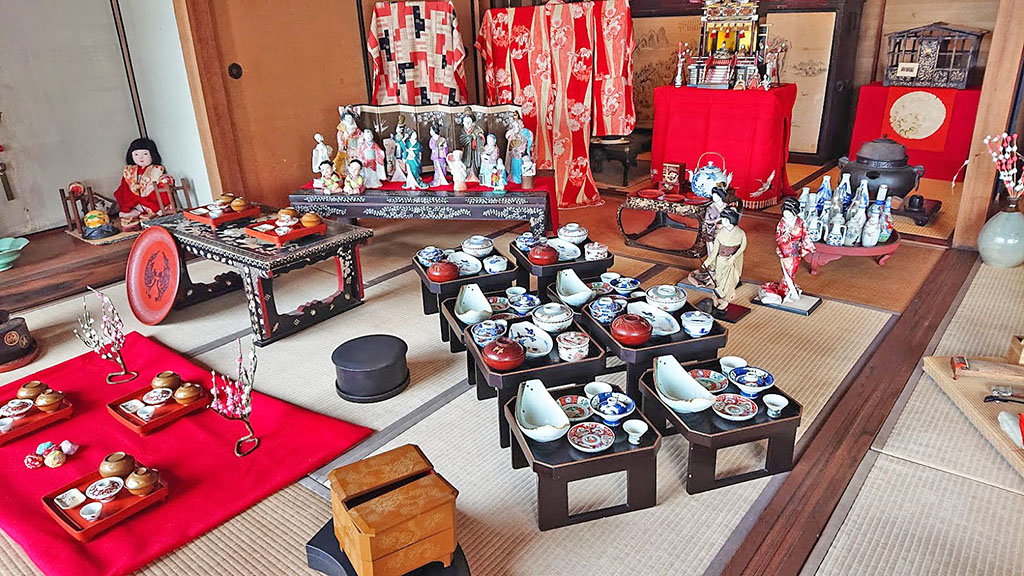
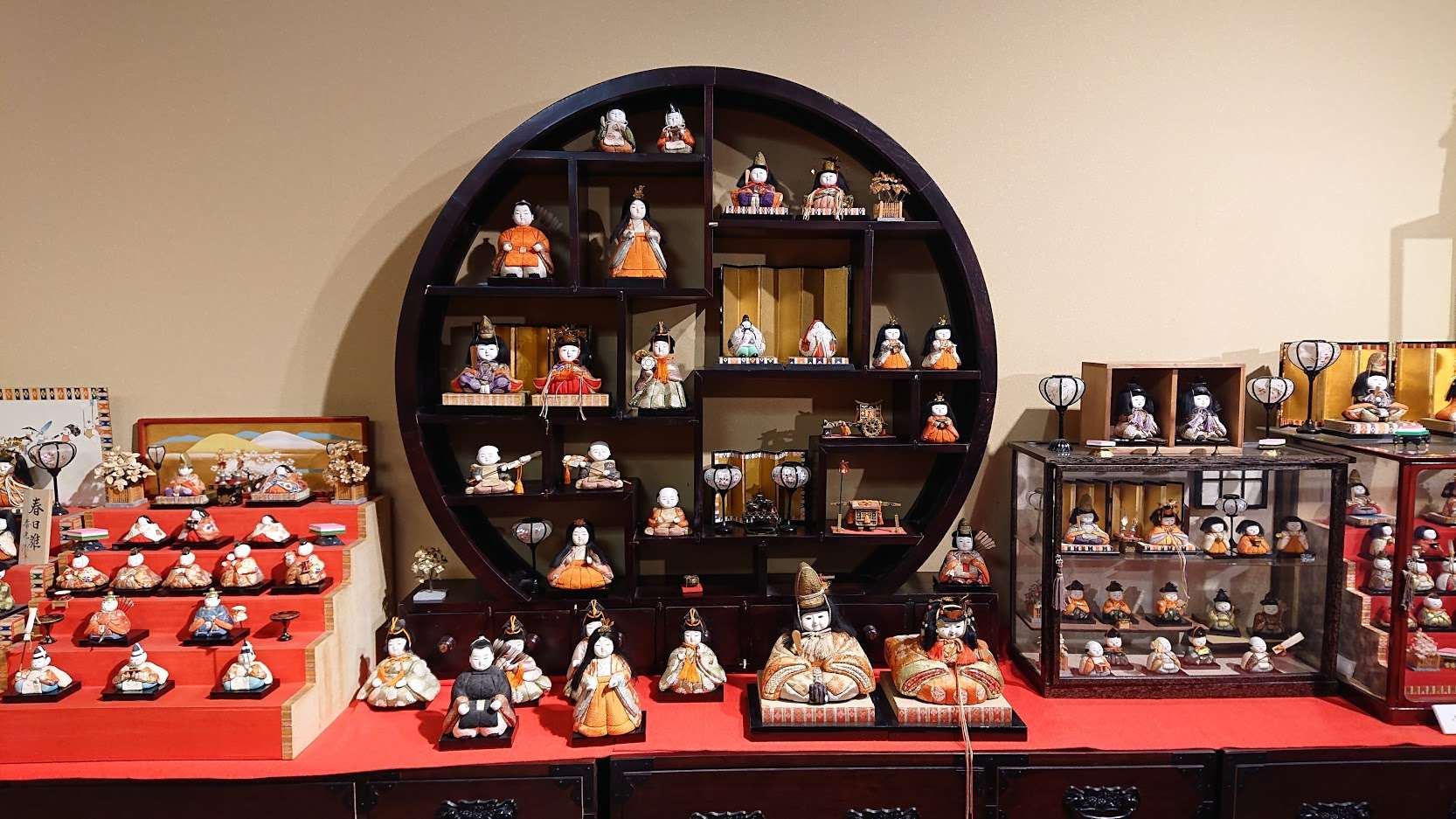
I wish my daughter well in spite of her poverty
Prayers of the Common People Embodied in Okiagehina Dolls
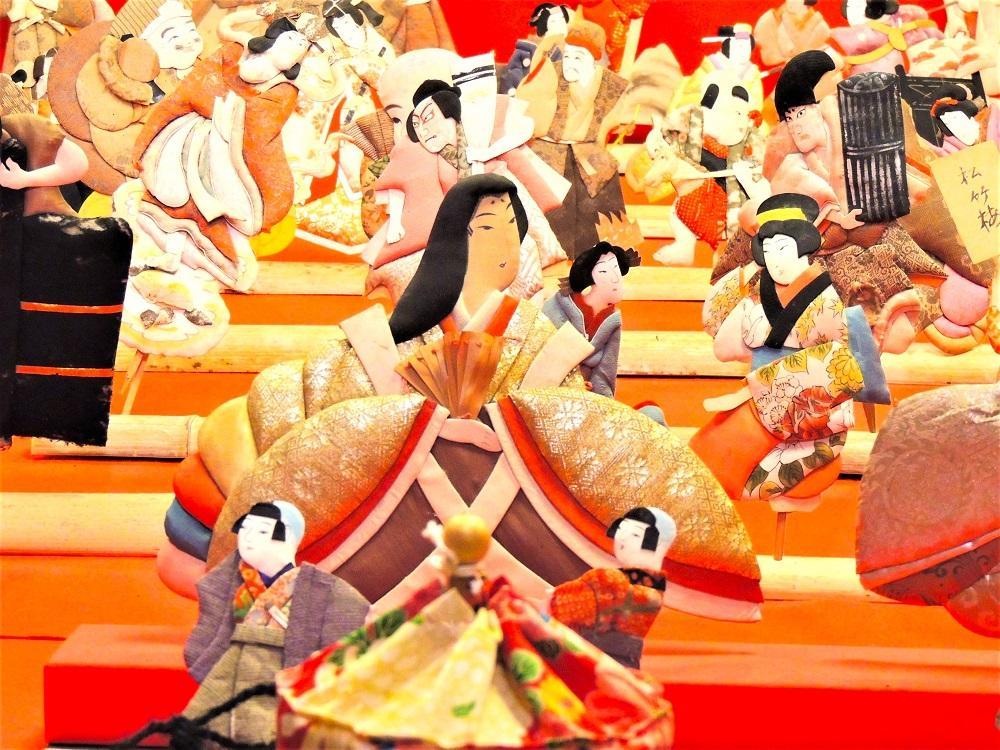
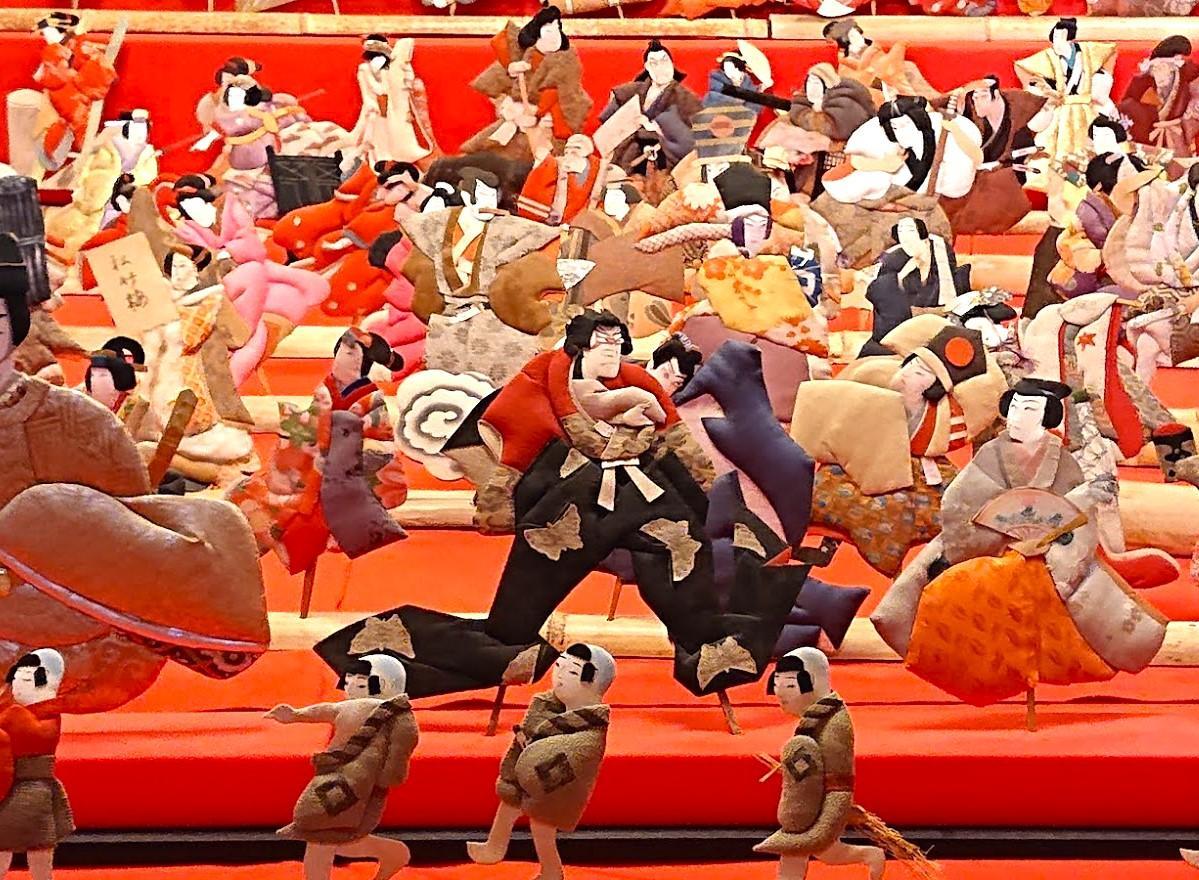
Including Hita, there are actually Hina-meguri events held all over Kyushu at this time of year. Each region has its own unique hina festivals, such as the "Sagemon Meguri" in Yanagawa. In the Chikugo River basin in the Hita area and the Ukiha area in neighboring Fukuoka Prefecture, you can see unique hina dolls called "okiage-hina. These dolls are made of old shoji paper, fusuma paper, old newspapers, etc., and colored with old cotton. Like Hagoita dolls, these dolls are flat. The doll is placed on the edge of a tatami mat with a bamboo skewer threaded through the back.
It is generally believed that the dolls were brought to Kurume by the lord of the Arima Clan during his visit to Japan, but it is also said that poor families who could not afford luxurious dolls made substitute dolls in this way to pray for the growth of their daughters. It is interesting to note that these oki-age-hina are not the "clear" type of hina dolls of the imperial family or court nobles, but are based on Kabuki actor pictures or Ukiyoe pictures of beautiful women and warriors. The shape of the dolls is what is called "moving". Hita City designates Okiagehina as a Tangible Folk Cultural Asset.
Gastronomy in Hita between Hina tours
You can also buy chic Hita cedar geta as a souvenir.
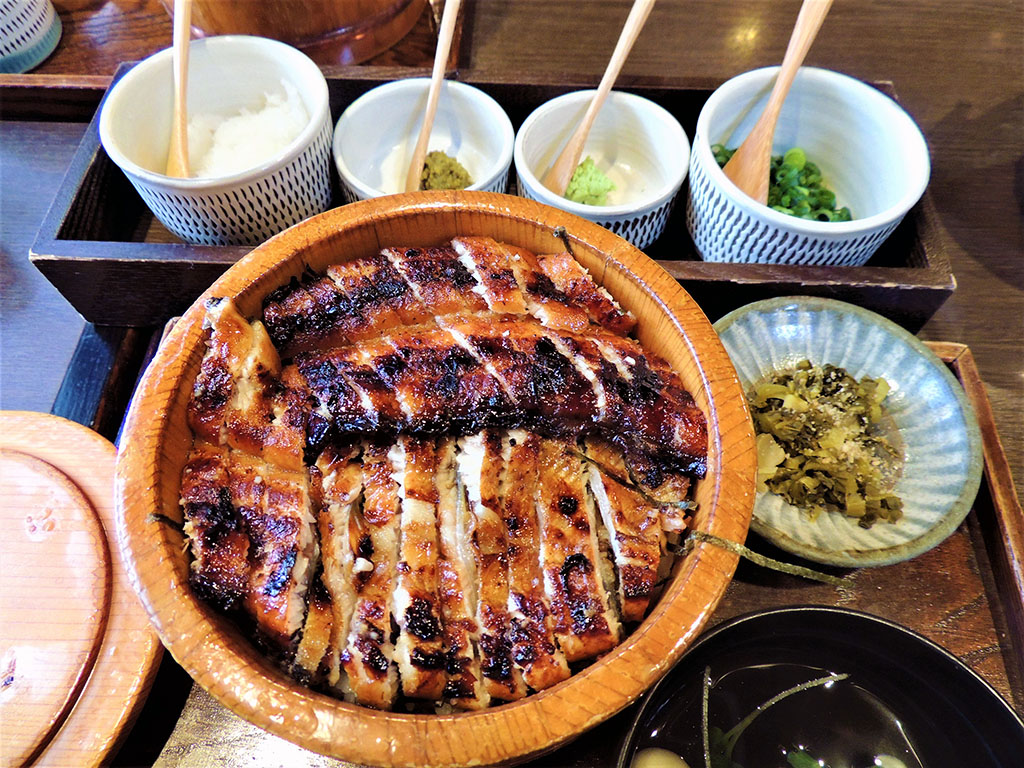
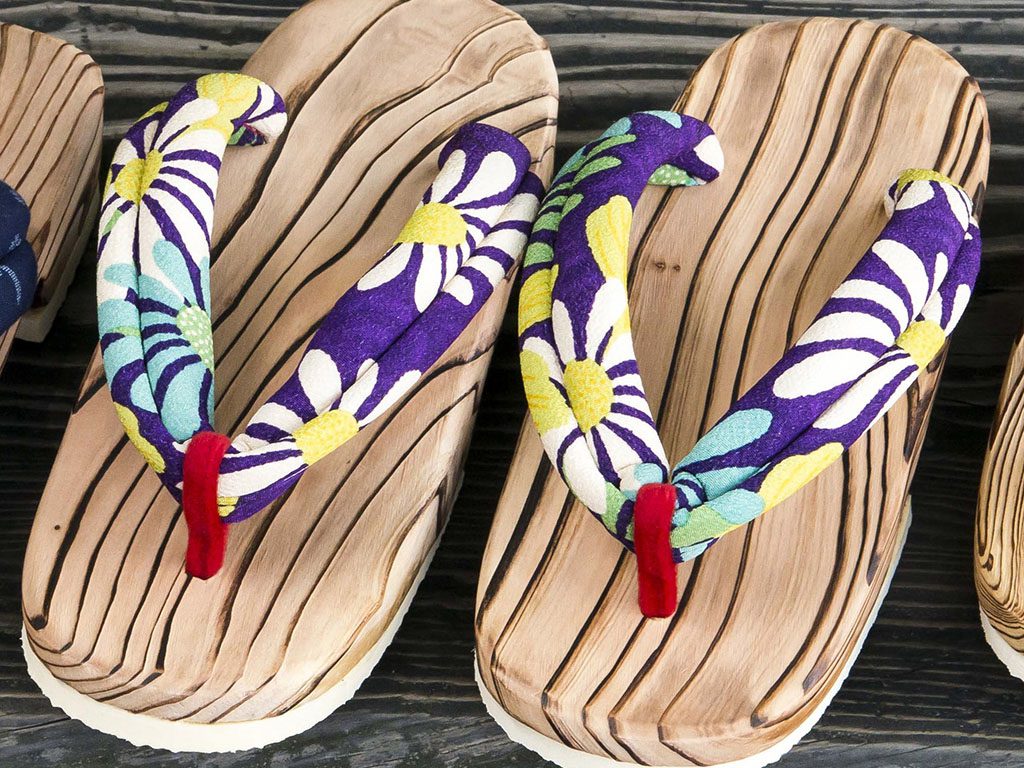
Even if you see enough hina dolls to fill your stomach, you will still get hungry. We recommend the famous "Hita-Mabushi" (Hita eel fritters). At "Hita-Mabushi Senya," you can taste unaju (eel stew) made of domestic eel with condiments unique to Hita. The owner of Senya invented this dish with a hint from Nagoya's "Hitsu-mabushi," and it can be enjoyed with grated daikon radish, chopped green onion, wasabi, and Hita's famous yuzu kosho (Japanese citrus pepper), as desired. First, the dish is served as is, then it is flavored with condiments of your choice, and finally it is served with chazuke, a green tea with dashi broth in an earthenware jar. You can enjoy different tastes depending on the combination and amount of condiments. The price is 3,500 yen (medium) and 4,600 yen (large).
Hita was originally known for its thriving forestry industry, and is especially famous for its Hita cedar. Furniture and geta (Japanese clogs) made of Hita cedar are made in Hita, and many tourists seek out Hita geta as affordable souvenirs. In recent years, sandal-like geta designs have been introduced to match the modern age. So, let your clogs echo and go back to Hina-san!
Hita City Tourism Association
| name | 11-3 Motomachi, Hita City, Oita Prefecture ☎ 0973-22-2036 |
|---|---|
| Business Hours | 9:00-17:00 |
| recess | January 1,2 |
| supplementary information | Related URL:. https://oidehita.com/ |
Hidamabushi Senya
| name | 4-14 Mameda-cho, Hita City, Oita Prefecture ☎ 0973-22-3130 |
|---|---|
| Business Hours | 11:00-18:00 (~20:00 on weekends and holidays) |
| recess | unscheduled holiday (e.g. on a bank holiday) |

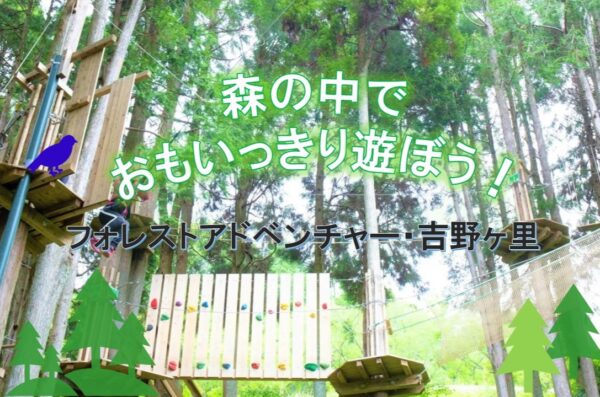
![Fluffy News!] Hot Springs Paradise in Kyushu! 14 stations in total! Let's go to Onsen (hot springs) in Kyushu and Michi no Eki!](https://team-flat-michinoeki.com/wp-content/uploads/2022/11/タイトル-1-300x192.jpg)
